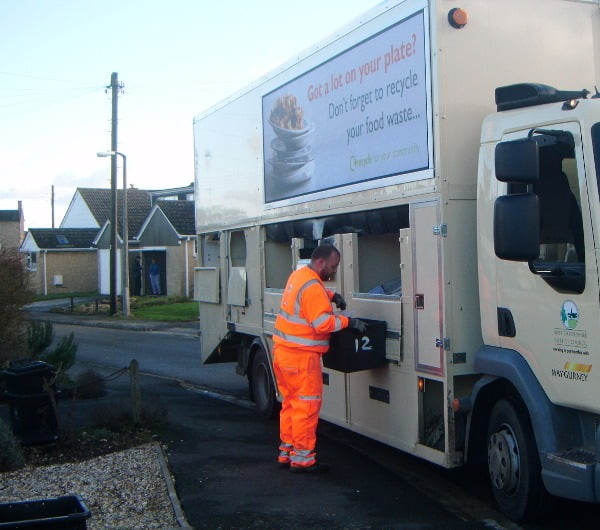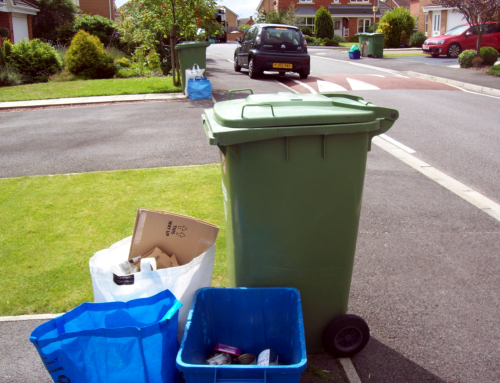by Peter Jones
4 minute read
One of the recurring claims in the tabloid press coverage of waste and recycling issues is that if local authorities collect more separate streams of recycling, it means householders having to separate each waste stream into a different container. The view in the popular press is typically that, if householders have to do more source separation it will result in dissatisfaction, confusion, and more contaminated recycling. It’s a view that has little basis in reality.
The assumption was behind a number of muddled stories when S.13 of the Waste (England and Wales) Regulations 2011 came into effect in 2015, and still pervades stories to this day. It seems that very few of the newspapers have any idea of the diversity of multi-stream collections currently in place, or of the concept of kerbside sort. That’s the collection system in which some or all of the sorting is done by trained operatives at the kerbside, with the added labour costs being offset by savings on subsequent mechanical processing – and the opportunity for the council to realise the full value of the recyclables collected.
Live streaming
In fact, amongst the multiplicity of collection models in use around the UK, we have a range of different forms of multi-stream system. The papers have fixated on the approach formerly taken in Newcastle-under-Lyme, or “The town where they have to put out NINE recycling boxes, bags and bins”, rolling out pictures of the offending range of containers at every opportunity.
Of course, even in this system, glass and metals were presented together and sorted at the kerbside, and you only counted nine containers if you classed the indoor and outdoor food caddies separately, and if you assumed people would need to put out a clothes recycling bag on each collection day… but this atypical collection system was the image of ‘separate collections’ that stuck. Now that Newcastle-under-Lyme has overhauled its system and reduced the number of containers, the picture editors are really going to be left scratching their heads.
There are a few kerbside sort authorities whose websites indicate that householders can put their dry recycling into boxes effectively as a single co-mingled stream, with all of the sorting done by operatives at the kerbside – although these authorities tend to collect only a limited range of materials. Quite a few others only ask residents to divide material between two containers, giving instructions about what goes in each. The WRAP consistency framework specifies three containers for kerbside sort schemes:
- One for paper
- One for glass and card
- One for plastics, metals and cartons.
There are also a handful of authorities ask residents to sort dry recycling into four streams, as Newcastle-under-Lyme formerly did.

Boxing clever: source separation can be achieved without householders having to do all of the work. Photo courtesy of Eunomia/Emma Tilbrook.
In principle, the more sorting householders do, the less time it should take for the collection crew to complete the task of putting the waste into the right compartments on the vehicle. In practice, residents are likely to sort somewhat less accurately than trained operatives, which might reduce the time efficiencies that additional separation by householders would be expected to deliver. Still, it is entirely possible for source separation to be achieved while requiring no more effort on the part of householders than for a co-mingled or two stream service.
Satisfying expressions?
The objections that are often raised against multi-stream collections that require residents to do some (or all) of the sorting are that it they are complicated and confusing. In the minds of many journalists, confusing systems are likely to lead to the recycling being contaminated, as there is a greater risk of householders putting material in the wrong container.
But these expectations aren’t supported by the data. There’s nothing to indicate that householders find sorting their recycling particularly difficult. Take Newcastle-under-Lyme, for example. In 2015, before the council simplified its containers, a survey of local residents found that 80% were satisfied with their waste service. At the same time, a national survey found an 82% satisfaction rate with council recycling – which suggests that multiple bins aren’t a particularly big turn-off, and that other factors may be more significant in determining satisfaction.
Nor does the data indicate that people are “confused” by multi-bin, multi-stream systems – at least in any way that leads to increased contamination and rejects. In fact, reprocessors tend to regard kerbside sorted, source-separated recycling as higher quality than mechanically sorted material, and the annual recycling statistics indicate that multi-stream authorities tend to have very low levels of rejects. The rise in rejects over recent years is largely attributable to authorities that use “simpler” single bin and two bin co-mingled systems.
So – newspapers take note. You don’t have to have a separate container for each separate stream of recycling, and very few multi-stream councils do; but if residents do more source separation, it reduces the costs for councils. There is little data to suggest that people have a strong preference for “simple” single bin systems, and no connection between multiple bins and higher levels of contamination or poor quality recycling. It’s time to give up lazily rehashed stories of confusing bin systems, and retire that out of date picture of bins in Newcastle-under-Lyme for good.






Returning Values of recycling to everyone in communities
Peter:
In the US, there is no way that curbside recycling works financially except for the companies that collect all wastes. You do the work and they benefit from your work by not having to do any separation; just selling your recylables and you get nothing. Even if you could sell them yourself, the income would never even equal the costs. Sure, you have gratification, and that is good enough. Hence, what you need to do is pool all your recyclables, like a cooperative with volume, selling to your own markets, and provide some income to those that recycle, a better situation.
Even better, that being a part of a system of technologies, that already exists, to process, recycle, and work in multiple markets that assist a whole community, one being the elimination of landfills,another marketing recyclables, and others providing low cost energy, compost, fertilizers, and such. a total solution.
I think I’ve given you the wrong end of the stick somehow, Ted. The issue here is whether councils collect recycling mixed together, or whether they collect it separated at source. The latter has higher collection costs, but results in greater material income – but while this approach is common in Wales, it is stigmatised in the English press because it is perceived as harder work for householders.
I’m certainly not suggesting that it is viable for people to separate and sell their own recycling individually. That would be just as unlikely to work in the UK as in the US.
Sorry for any confusion.